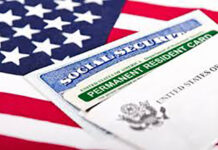
News Americas, NEW YORK, NY, Fri. May 27, 2016: There is no denying that the electoral power which the Immigrant or New American voting populace wields is growing stronger with the passing of each Presidential election. This was evident in the fact that the number of New American voters in 2012 exceeded the margin by which President Obama either won or lost the race in 12 states four years ago. With November 2016 fast approaching, here are 10 fast facts both parties should pay attention to when it comes to the power of the immigrant vote:
1: New Americans – foreign born blacks, Latinos, and Asians and Pacific Islanders (APIs) are the fastest growing segments of the electorate. There were 18.1 million New Americans registered to vote in 2012, totaling 11.8 percent of all registered voters according to the American Immigration Council. This amounts to an increase of 10.6 million (or 143.1 percent) since 1996. As of 2012, 13.7 million Latinos accounted for 8.9 percent of all registered voters, while 4.8 million APIs accounted for 3.2 percent. Black voters – including foreign born naturalized black voters – accounted for 17.8 million in 2012.
2: According to the American Immigration Council, between 1996 and 2012 – the last election – the number of New American registered voters rose by 10.6 million – an increase of 143.1 percent. In this election, that number promises to increase.
3: This year, the U.S. electorate will be the country’s most racially and ethnically diverse ever. Nearly one-in-three eligible voters on Election Day (31 percent) will be Hispanic, black, Asian or another racial or ethnic minority, up from 29 percent in 2012.
4: There is increasingly fewer and fewer voters that are native-born white voters. The number of registered voters who identified as Latinos or Asians and Pacific Islanders (APIs) increased by 9.8 million in 2012. Between 1996 and 2012, the number of Latino registered voters increased by 7.1 million (an increase of 108.4 percent). API registered voters increased in number by 2.7 million (an increase of 125.5 percent). Between 1996 and 2012, the Latino share of all registered voters increased by 3.8 percentage points and the API share by 1.5 percentage points. Black immigrants now account for 8.7 percent of the nation’s black population, nearly triple their share in 1980. Black immigrants are somewhat more likely to hold U.S. citizenship than all immigrants—54 percent versus 47 percent. The Census Bureau projects that by 2060, 16.5 percent of U.S. blacks will be immigrants. In contrast, the non-Latino white share declined by 8.0 percentage points.
5: The Pew Research Center (PRC) recently revealed that the number of legal permanent residents applying for U.S. citizenship in the four months starting last October is at its highest level in four years, and it is up 5 percent from the same period before the 2012 elections.
6: According to the Pew Research Center (PRC), a record 27.3 million Latinos will be eligible to vote in the 2016 presidential elections.
7: Hispanic millennials will account for nearly half (44 percent) of the record 27.3 million Hispanic eligible voters projected for 2016 – a share greater than any other racial or ethnic group of voters, according to a new Pew Research Center analysis of U.S. Census Bureau data.
8: Since 2012, 60 percent of new Asian eligible voters have gained the right to vote by this means. By comparison, 26 percent of new Hispanic eligible voters came from naturalizations during this time.
9: California is home to more New American registered voters (4.7 million) than any other state. This is followed by New York (2.1 million), Florida (1.8 million), and Texas (1.4 million).
10: A breakdown by Latino voters by state according to PRC shows the following:
Alabama – 67,000
Alaska – 29,000
Arizona – 992,000
Arkansas – 60,000
California – 6,919,000
Colorado – 55,000
Connecticut – 280,000
Delaware – 40,000
District of Columbia – 27,000
Florida – 2,557,000
Georgia – 291,000
Hawaii – 85,000
Idaho – 80,000
Illinois – 951,000
Indiana – 167,000
Iowa – 67,000
Kansas – 125,000
Kentucky – 49,000
Louisiana – 99,000
Maine – 12,000
Maryland – 199,000
Massachusetts – 372,000
Michigan – 231,000
Minnesota – 96,000
Mississippi – 31,000
Missouri – 107,000
Montana – 19,000
Nebraska – 69,000
Nevada – 328,000
New Hampshire – 22,000
New Jersey – 831,000
New Mexico – 591,000
New York – 1,882,000
North Carolina – 248,000
North Dakota – 11,000
Ohio – 199,000
Oklahoma – 138,000
Oregon – 187,000
Pennsylvania – 440,000
Rhode Island- 68,000
South Carolina – 88,000
South Dakota – 29,000
Tennessee – 92,000
Texas – 4,818,000
Utah – 147,000
Vermont – 7,000
Virginia – 277,000
Washington – 334,000
West Virginia – 13,000
Wisconsin – 156,000
Wyoming – 28,000










